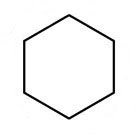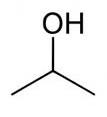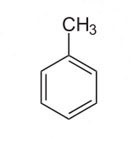Cyclohexane
CAS: 110-82-7
Cyclohexane also known as CYX, hexamethylene, hexahydrobenzene, hexanaphthene, and benzenehexahydride is a colourless, volatile, and flammable liquid with the molecular formula C6H12, CAS: 110-82-7. It has a mild odour and is insoluble in water but soluble in alcohol, ether, acetone, benzene, and ligroin. Cyclohexane occurs naturally in petroleum crude oil, volcanic gases and cigarette smoke.

Cyclohexane Chemical Structure Composition.
Production
Cyclohexane can be produced by two methods. The first is the catalytic hydrogenation of benzene using rhodium on carbon, and the second method is via fractional distillation of petroleum.
It has a specific gravity of 0.78 and a flashpoint of -20° C and is highly flammable
Uses
Cyclohexane is used predominately in the nylon industry where approximately 90% of it is consumed in the industrial production of adipic acid and caprolactam, which are themselves used to generate nylon6 and nylon6.6. The rest is used both as a solvent for paints, resins, varnish and oil, and as a plasticiser. Cyclohexane can also be used as an intermediate in the manufacture of other industrial chemicals such as cyclohexanone and nitrocyclohexanone.
Arpadis is one of the largest chemical distributor in Europe.
Arpadis is handling the storage, transport, export & import formalities of Cyclohexane globally.




